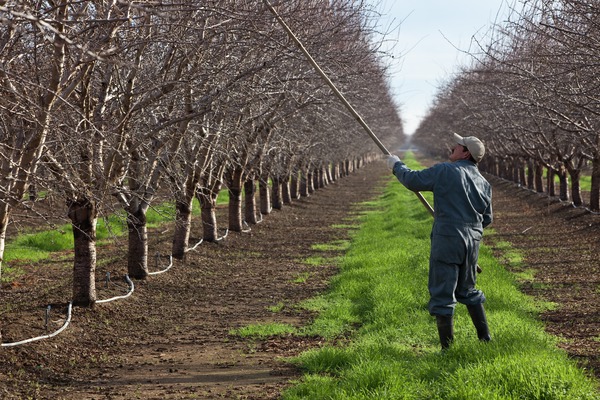
A perfect harvest, where every single almond is shaken from the tree and picked up off the ground, isn’t likely. But it would go a long way in helping to control navel orangeworm (NOW).
Winter sanitation or mummy shaking is strongly encouraged for all growers to remove unharvested nuts from the orchard, help eliminate overwintering NOW larvae and remove many egg laying sites. Starting the next growing season off with lower NOW levels can help lower nut damage at harvest.
The timeframe for mummy shaking is after harvest through early February.
PCA Justin Nay of Integral Ag said mummy shaking and orchard sanitation is the least expensive method to control NOW as it removes springtime first flight oviposition sites.
“We tell them it is inexpensive compared to the alternative, which is a gamble. Every one of our growers every year is told to at least mummy shake.” Nay said. Some growers like to gamble more than others, he noted, “but as a consultant, I like to stack the deck in their favor and then count cards, which all starts with mummy shaking.”
Nay said they will do a mummy crack out in the orchard to first determine the infestation level and then assess if further control measures are warranted after the shake.
Economic consequences for skipping the shake can be severe. Mel Machado, director of member relations at Blue Diamond Growers, said that inadequate orchard sanitation means growers will be fighting NOW issues all through the growing season and leaving their crop vulnerable to damage.
Product delivered to the processor with NOW damage will result in lower returns. Processors will pass on the added costs of sorting damaged nuts, testing for aflatoxin, fumigation and rejection rates from buyers.
Hullers and shellers can screen out some of the damaged nuts, but depending on per-acre yield and prices, NOW damage at 2% can mean losses ranging from $336 to $436 per acre, according to Machado. Costs for a strong control program that includes not only winter sanitation, but also mating disruption, is estimated at $250 per acre.
ABC-funded research showed that with each successive generation of NOW, their numbers increase exponentially. Removing nuts from the trees and orchard floor will reduce the number of NOW early. Ideal weather conditions for shaking are in fog or light rain as that adds weight to the mummies, increasing numbers shaken from the tree.











